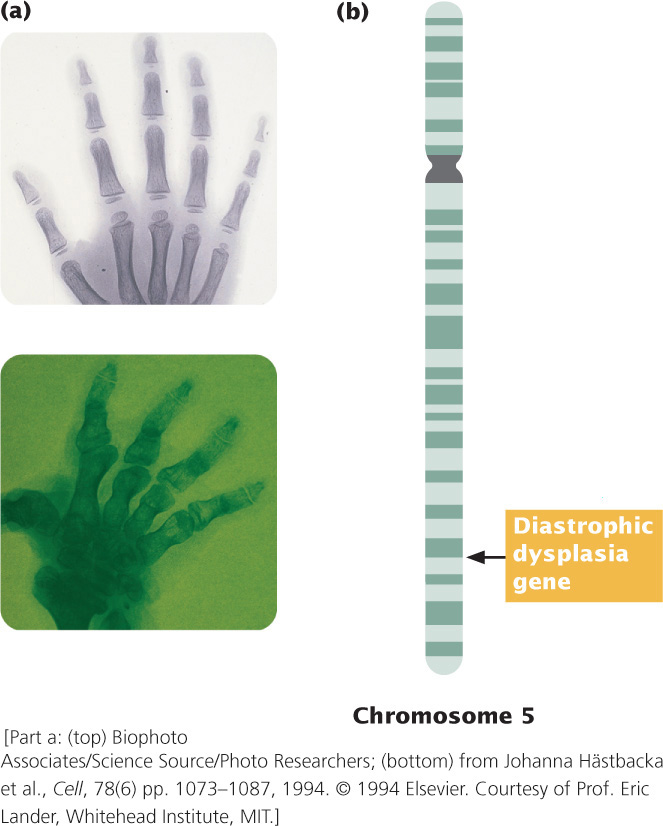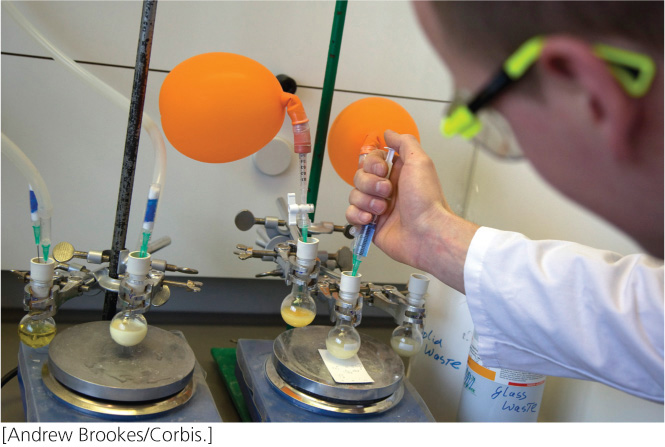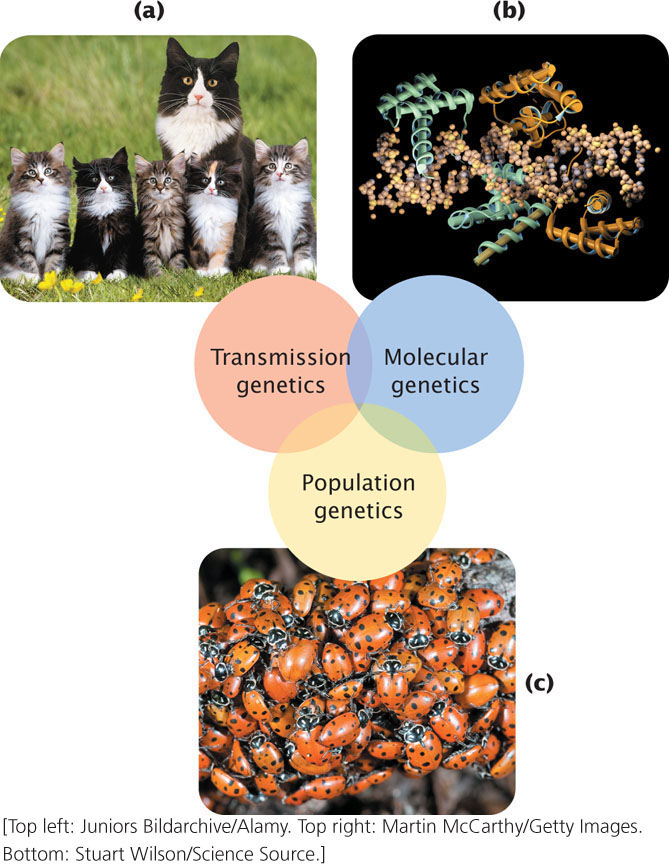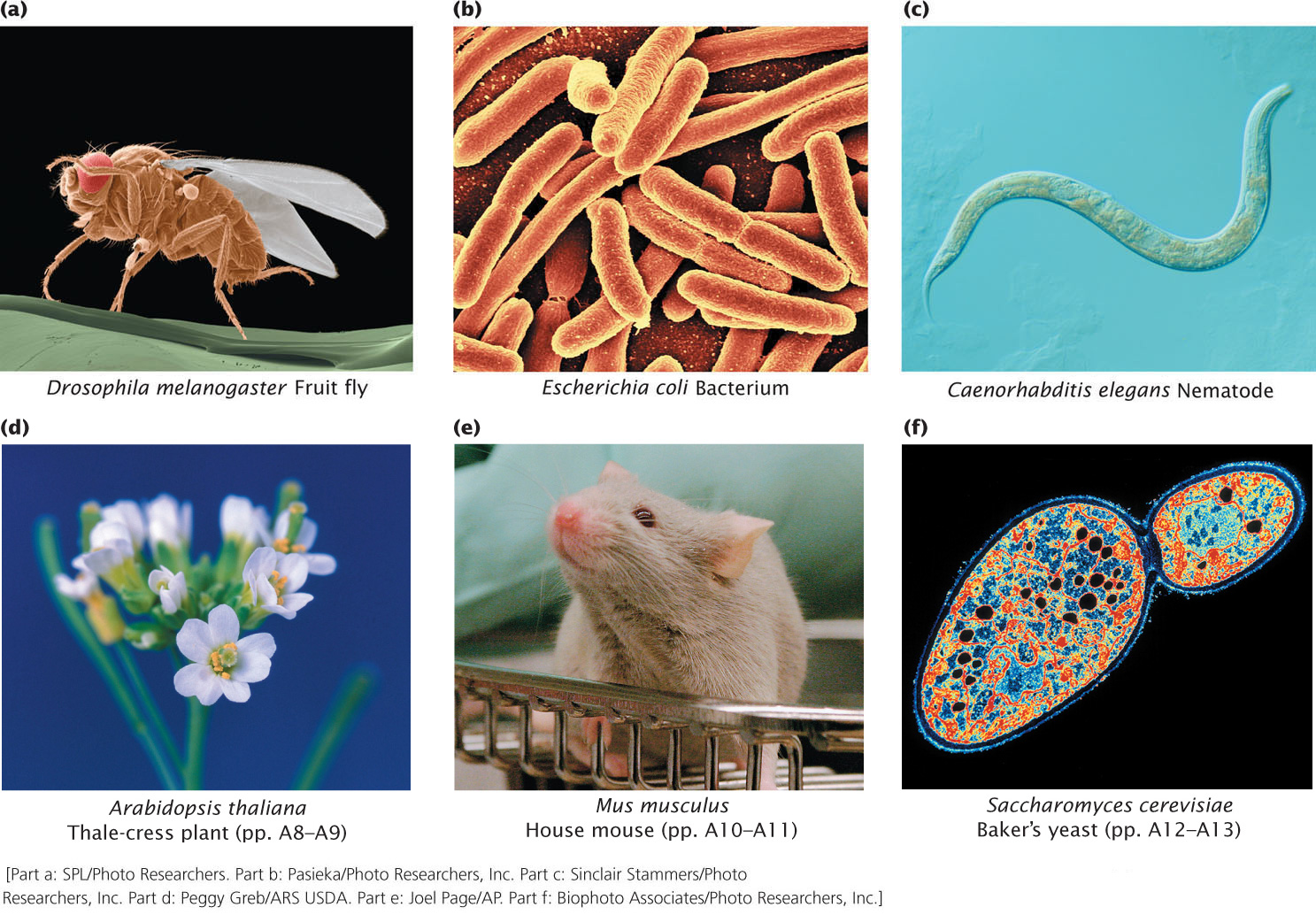1.1 Genetics Is Important to Us Individually, to Society, and to the Study of Biology
Albinism among the Hopis illustrates the important role that genes play in our lives. This one genetic defect, among the 20,000 genes that humans possess, completely changes the life of a Hopi who possesses it. It alters his or her occupation, role in Hopi society, and relations with other members of the tribe. We all possess genes that influence our lives in significant ways. Genes affect our height, weight, hair color, and skin pigmentation. They affect our susceptibility to many diseases and disorders (Figure 1.2) and even contribute to our intelligence and personality. Genes are fundamental to who and what we are.

3
Although the science of genetics is relatively new compared with sciences such as astronomy and chemistry, people have understood the hereditary nature of traits and have practiced genetics for thousands of years. The rise of agriculture began when people started to apply genetic principles to the domestication of plants and animals. Today, the major crops and animals used in agriculture are quite different from their wild progenitors, having undergone extensive genetic alterations that increase their yields and provide many desirable traits, such as disease and pest resistance, special nutritional qualities, and characteristics that facilitate harvest. The Green Revolution, which expanded food production throughout the world in the 1950s and 1960s, relied heavily on the application of genetics (Figure 1.3). Today, genetically engineered corn, soybeans, and other crops constitute a significant proportion of all the food produced worldwide.

The pharmaceutical industry is another area in which genetics plays an important role. Numerous drugs and food additives are synthesized by fungi and bacteria that have been genetically manipulated to make them efficient producers of these substances. The biotechnology industry employs molecular genetic techniques to develop and mass-produce substances of commercial value. Growth hormones, insulin, clotting factor, enzymes, antibiotics, vaccines and many drugs are now produced commercially by genetically engineered bacteria and other cells (Figure 1.4). Genetics has also been used to produce bacteria that remove minerals from ore, break down toxic chemicals, and inhibit damaging frost formation on crop plants.

Genetics also plays a critical role in medicine. Physicians recognize that many diseases and disorders have a hereditary component, including rare genetic disorders such as sickle-cell anemia and Huntington disease as well as many common diseases such as asthma, diabetes, and hypertension. Advances in genetics have resulted in important insights into the nature of diseases such as cancer and in the development of diagnostic tests including those that identify pathogens and defective genes. Gene therapy—the direct alteration of genes to treat human diseases—has now been administered to thousands of patients, although its use is still experimental and limited to treating a few disorders.
4
The Role of Genetics in Biology
Although an understanding of genetics is important to all people, it is critical to the student of biology. Genetics provides one of biology’s unifying principles: all organisms use genetic systems that have a number of features in common. Genetics also undergirds the study of many other biological disciplines. Evolution, for example, is genetic change taking place through time; so the study of evolution requires an understanding of genetics. Developmental biology relies heavily on genetics: tissues and organs develop through the regulated expression of genes (Figure 1.5). Even such fields as taxonomy, ecology, and animal behavior are making increasing use of genetic methods. The study of almost any field of biology or medicine is incomplete without a thorough understanding of genes and genetic methods.

Genetic Diversity and Evolution
Life on Earth exists in a tremendous array of forms and features in almost every conceivable environment. Life is also characterized by adaptation: many organisms are exquisitely suited to the environment in which they are found. The history of life is a chronicle of new forms of life emerging, old forms disappearing, and existing forms changing.
Despite their tremendous diversity, living organisms have an important feature in common: all use similar genetic systems. A complete set of genetic instructions for any organism is its genome, and all genomes are encoded in nucleic acids—either DNA or RNA. The coding system for genomic information is also common to all life: genetic instructions are in the same format and, with rare exceptions, the code words are identical. Likewise, the process by which genetic information is copied and decoded is remarkably similar for all forms of life. These common features of heredity suggest that all life on Earth evolved from the same primordial ancestor that arose between 3.5 billion and 4 billion years ago. Biologist Richard Dawkins describes life as a river of DNA that runs through time, connecting all organisms past and present.
That all organisms have similar genetic systems means that the study of one organism’s genes reveals principles that apply to other organisms. Investigations of how bacterial DNA is copied (replicated), for example, provide information that applies to the replication of human DNA. It also means that genes will function in foreign cells, which makes genetic engineering possible. Unfortunately, these similar genetic systems are also the basis for diseases such as AIDS (acquired immune deficiency syndrome), in which viral genes are able to function—sometimes with alarming efficiency—in human cells.
Life’s diversity and adaptation are products of evolution, which is simply genetic change through time. Evolution is a two-step process: first, inherited differences arise randomly and, then, the proportion of individuals with particular differences increases or decreases. Genetic variation is therefore the foundation of all evolutionary change and is ultimately the basis of all life as we know it. Furthermore, techniques of molecular genetics are now routinely used to decipher evolutionary relationships among organisms; for example, recent analysis of DNA isolated from Neanderthal fossils has yielded new information concerning the relationship between Neanderthals and modern humans, demonstrating that Neanderthals and the ancestors of modern humans likely interbred some 30,000 to 40,000 years ago. Genetics, the study of genetic variation, is critical to understanding the past, present, and future of life.  TRY PROBLEM 17
TRY PROBLEM 17
CONCEPTS
Heredity affects many of our physical features as well as our susceptibility to many diseases and disorders. Genetics contributes to advances in agriculture, pharmaceuticals, and medicine and is fundamental to modern biology. All organisms use similar genetic systems, and genetic variation is the foundation of the diversity of all life.
 CONCEPT CHECK 1
CONCEPT CHECK 1
What are some of the implications of all organisms having similar genetic systems?
- That all life forms are genetically related
- That research findings on one organism’s gene function can often be applied to other organisms
- That genes from one organism can often exist and thrive in another organism
- All of the above
5
Divisions of Genetics
The study of genetics consists of three major subdisciplines: transmission genetics, molecular genetics, and population genetics (Figure 1.6). Also known as classical genetics, transmission genetics encompasses the basic principles of heredity and how traits are passed from one generation to the next. This area addresses the relation between chromosomes and heredity, the arrangement of genes on chromosomes, and gene mapping. Here, the focus is on the individual organism—how an individual organism inherits its genetic makeup and how it passes its genes to the next generation.

Molecular genetics concerns the chemical nature of the gene itself: how genetic information is encoded, replicated, and expressed. It includes the cellular processes of replication, transcription, and translation (by which genetic information is transferred from one molecule to another) and gene regulation (the processes that control the expression of genetic information). The focus in molecular genetics is the gene, its structure, organization, and function.
Population genetics explores the genetic composition of groups of individual members of the same species (populations) and how that composition changes geographically and with the passage of time. Because evolution is genetic change, population genetics is fundamentally the study of evolution. The focus of population genetics is the group of genes found in a population.
Division of the study of genetics into these three groups is convenient and traditional, but we should recognize that the fields overlap and that each major subdivision can be further divided into a number of more-specialized fields, such as chromosomal genetics, biochemical genetics, quantitative genetics, and so forth. Alternatively, genetics can be subdivided by organism (fruit fly, corn, or bacterial genetics), and each of these organisms may be studied at the level of transmission, molecular, and population genetics. Modern genetics is an extremely broad field, encompassing many interrelated subdisciplines and specializations.  TRY PROBLEM 18
TRY PROBLEM 18
Model Genetic Organisms
Through the years, genetic studies have been conducted on thousands of different species, including almost all major groups of bacteria, fungi, protists, plants, and animals. Nevertheless, a few species have emerged as model genetic organisms—organisms having characteristics that make them particularly useful for genetic analysis and about which a tremendous amount of genetic information has accumulated. Six model organisms that have been the subject of intensive genetic study are: Drosophila melanogaster, a fruit fly; Escherichia coli, a bacterium present in the gut of humans and other mammals; Caenorhabditis elegans, a nematode worm; Arabidopsis thaliana, the thale-cress plant; Mus musculus, the house mouse; and Saccharomyces cerevisiae, baker’s yeast (Figure 1.7). These species are the organisms of choice for many genetic researchers, and their genomes were sequenced as a part of the Human Genome Project (see Chapter 20). The life cyles and genetic characteristics of these model genetic organisms are described in more detail in the Reference Guide to Model Genetic Organisms located at the end of this book. This Reference Guide will be a useful resource as you encounter these organisms throughout the book.

At first glance, this group of lowly and sometimes unappreciated creatures might seem unlikely candidates for model organisms. However, all possess life cycles and traits that make them particularly suitable for genetic study, including a short generation time, large but manageable numbers of progeny, adaptability to a laboratory environment, and the ability to be housed and propagated inexpensively. Other species that are frequently the subjects of genetic research and considered genetic models include Neurospora crassa (bread mold), Zea mays (corn), Danio rerio (zebrafish), and Xenopus laevis (clawed frog). Although not generally considered a genetic model, humans also have been subjected to intensive genetic scrutiny; special techniques for the genetic analysis of humans are discussed in Chapter 6.
6
The value of model genetic organisms is illustrated by the use of zebrafish to identify genes that affect skin pigmentation in humans. For many years, geneticists have recognized that differences in pigmentation among human ethnic groups are genetic (Figure 1.8a), but the genes causing these differences were largely unknown. The zebrafish has become an important model in genetic studies because it is a small vertebrate that produces many offspring and is easy to rear in the laboratory. The mutant zebrafish called golden has light pigmentation due to the presence of fewer, smaller, and less-dense pigment-containing structures called melanosomes in its cells (Figure 1.8b).

Keith Cheng and his colleagues hypothesized that light skin in humans might result from a mutation that is similar to the golden mutation in zebrafish. Taking advantage of the ease with which zebrafish can be manipulated in the laboratory, they isolated and sequenced the gene responsible for the golden mutation and found that it encodes a protein that takes part in calcium uptake by melanosomes. They then searched a database of all known human genes and found a similar gene called SLC24A5, which encodes the same function in human cells. When they examined human populations, they found that light-skinned Europeans typically possess one form of this gene, whereas darker-skinned Africans, Eastern Asians, and Native Americans usually possess a different form of the gene. Many other genes also affect pigmentation in humans, as illustrated by mutations in the OCA2 gene that produce albinism among the Hopi Native Americans (discussed in the introduction to this chapter). Nevertheless, SLC24A5 appears to be responsible for 24% to 38% of the differences in pigmentation between Africans and Europeans. This example illustrates the power of model organisms in genetic research. However, we should not forget that all organisms possess unique characteristics and sometimes the genetics of models do not accurately reflect the genetic systems of other organisms.
7
CONCEPTS
The three major divisions of genetics are transmission genetics, molecular genetics, and population genetics. Transmission genetics examines the principles of heredity; molecular genetics deals with the gene and the cellular processes by which genetic information is transferred and expressed; population genetics concerns the genetic composition of groups of organisms and how that composition changes geographically and with the passage of time. Model genetic organisms are species that have received special emphasis in genetic research; they have characteristics that make them useful for genetic analysis.
 CONCEPT CHECK 2
CONCEPT CHECK 2
Would the horse make a good model genetic organism? Why or why not?